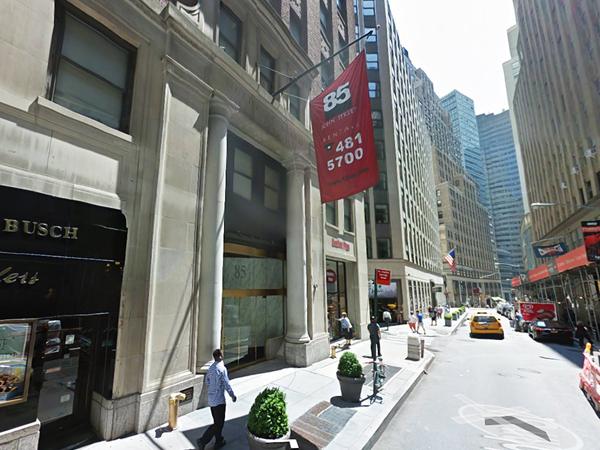
The landlord of 85 John St. has successfully fended off a tenant lawsuit seeking rent-stabilization protection under the 421-g program that gives the owner tax breaks.
BY COLIN MIXSON
A Supreme Court judge has granted a Downtown landlord cart blanche to charge tenants market rates, despite receiving generous tax abatements through a program mandating residents receive rent stabilization.
In his May 2 decision, Justice Hagler cited a letter that former Mayor Rudy Giuliani wrote in 1995, which has managed to override state legislation for decades to benefit landlords over tenants, according to a lawyer for tenants at the building in question, 85 John St.
“We believe that Justice Hagler erred in relying on the Giuliani letter and finding that the State Legislature intended to permit landlords to enjoy generous tax benefits without anything in return,” said attorney Serge Joseph.
Seeking to spur development in the blighted Lower Manhattan of the mid ’90s, state senators voted 53-1 to award a generous tax break — called 421-g — to developers willing to convert aging office buildings to residential use — but requiring in return that rent increases be capped through rent-stabilization laws.
But just before the ballots were cast, then Senate Republican Leader Joseph Bruno read the so-called “Giuliani Letter” into the record, in which the former mayor declared that the city intended to interpret the law’s rent regulations to be subject to luxury-deregulation laws — which remove units with rents higher than (then) $2,000 per month (currently $2,700-per month) from rent stabilization.
Members of the state Assembly, which had already passed the bill before the Senate sat down to deliberate, did not see the letter in time to respond before the bill passed.
And while language within the bill never mentioned any exclusions based on rent, landlords have pointed to the now-infamous Giuliani Letter ever since as justification for charging market rates for a huge majority of all rental units built under 421-g — while still receiving massive tax breaks through the program.
In his decision, Hagler made frequent reference to the bill’s ambiguity regarding rent stabilization, calling it a “knotty issue” and citing statements from other Chief Judges who described rent control laws as an “impenetrable thicket.”
But the language governing 421-g is neither knotty nor impenetrable, according to Joseph, who claims legislators were very clear in their intent that all apartments created through the 421-g program be subject to rent stabilization.
“It’s absolutely clear and unequivocal,” said Joseph. “It said what it says.”
The landlord at 85 John St., on the other hand, argued that the tax break’s intent was always to promote the revitalization of a recession-era Lower Manhattan, and that slapping a permanent cap on rent increases for all converted residential units would have only put building owners off the idea of investing millions to retrofit their dilapidated office towers, according to the landlord’s attorney, Joe Burden.
“The intent of the statute was to incentivize commercial property owners to convert their properties to residential use,” Burden said. “Freezing the rents at rent-stabilized levels … would de-incentivize the owner.”
Joseph has represented tenants in numerous similar cases, and claims landlords are typically eager to settle out of court, lest an unfavorable decision force them to provide all their residents with rent-stabilization protections.
“Landlords tend not to want to risk a finding that all the apartments in their building are subject to rent stabilization, so they settle,” he said.
Prior to this most recent case, judges with the city’s Housing Court have made two decisions regarding the law, one in favor of tenants, and another in favor of landlords.
Justice Hagler’s is the highest-level decision regarding the law so far, but the rent-stabilization questions around 421-g has yet to reach the appellate division of New York’s highest court and, until that happens, it will be up to tenants to shoulder the costs of litigation to push the court to bring decisive clarity to the decades-old legislation, Joseph said.
“That would settle the issue once and for all, so that individual private parties won’t be incurring legal fees at the risk of eviction and all these other things,” the legal eagle remarked.
Joseph’s clients haven’t decided whether they will appeal — which is an expensive and time-consuming process — but if they did, the case would go to the Appellate Division. A win there would potentially bestow rent-stabilization protections to tenants in thousands of units built under the 421-g. But in that case, Joseph said, the landlord could appeal the decision to the Court of Appeals — the highest court in the state — where the result would be final and binding.

















